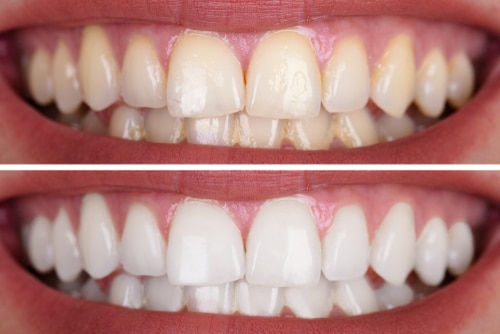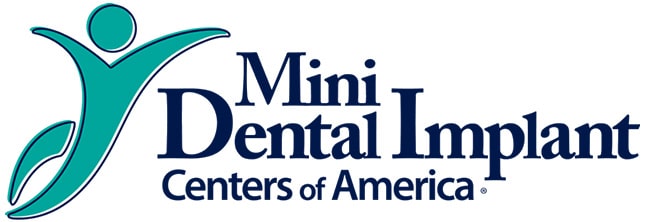Teeth Whitening in Union City, NJ
Providing affordable, non-invasive teeth whitening to dramatically whiten your teeth in no time
According to the American Academy of Cosmetic Dentistry, when people were asked in a survey what they wanted to improve about their smiles, most of them answered that they’d want whiter teeth. According to the same survey, almost 75% of people think an unattractive smile can damage a person’s career.
The American Dental Association found that most people consider a person’s smile as their most important physical feature – not their hair, eyes, or even their body. As you can see, maintaining a beautiful smile is important for many different reasons, which means teeth whitening is also important.
What Causes Yellowing Teeth?
As infants, when our brand-new teeth first erupt, they are a beautiful shade of white. Through the years, as we age, that white gradually takes on a dull, yellow hue.
Some people’s natural transition from white to not-so-white is more significant or quicker than others, mainly because of differences in lifestyle. Lifestyle habits are some of the biggest causes of tooth discoloration, some of which include:
- Drinking staining beverages like tea, coffee, red wine, and cola
- Eating staining foods like dark berries, tomato sauces, and sweets
- Smoking or using other tobacco products
- Taking certain medications
- Trauma to teeth or infection
In addition, normal wear and tear over time can discolor teeth, too. As people age, the enamel can thin and wear down. This causes dentin (which is yellow) to show through more, making teeth look yellow and stained.
Tips to Reduce Staining
 The best way to whiten your smile is to not let your teeth become overly discolored in the first place. Do keep in mind that some discoloration with age is normal and natural. However, to prevent accelerating the discoloration, here are some tips to follow:
The best way to whiten your smile is to not let your teeth become overly discolored in the first place. Do keep in mind that some discoloration with age is normal and natural. However, to prevent accelerating the discoloration, here are some tips to follow:
- Reduce your intake of staining foods and drinks
- Brush your teeth after consuming staining foods and drinks
- Don’t use tobacco products
- Drink beverages that can stain teeth through a straw
If you can’t brush after consuming staining foods or drinks, at least drink or swish around some water to help rinse some of the staining particles away.
What About DIY Teeth Whitening?
For most people, no matter how much they may follow the tips above, some discoloration will still take place over time.
There are many ways to whiten teeth featured in magazines and online, from brushing with charcoal to using lemons to swishing with peroxide. However, you must be properly informed about the methods people claim are effective.
While it might be tempting to reach for common household ingredients and scrub away with them, you need to know that DIY teeth whitening can actually do more harm than good.
Your best bet when it comes to teeth whitening is to talk with Dr. Diana Rodriguez, DMD, about your goals. Everyone’s teeth are unique, so it’s vital that you seek professional advice before you engage in any teeth whitening efforts to make sure it’s done properly to reduce the risk of damaging your pearly whites.
Household Items Used to Whiten Teeth
Many DIY approaches suggest using naturally acidic things like apple cider vinegar, oranges, and lemons with something abrasive like baking soda. As for charcoal, the Journal of the American Dental Association states that there is no evidence of products with charcoal being safe or effective for teeth whitening.
You put your teeth at risk of damage when they are exposed to prolonged contact with these acidic products and abrasive materials that can wear down the thin outer layer of your teeth (enamel). Worn enamel can cause sensitivity and pain while exposing your teeth to a greater risk of cavities.
The enamel is the part of the tooth that you want to whiten – not scratch away. Using abrasive materials on your teeth can actually make them look more yellow! If you scrub the enamel away, you expose that layer of softer tissue underneath, dentin. And dentin is yellow.
Over-the-Counter At-Home Teeth Whitening Kits
In general, over-the-counter (OTC) teeth whitening products contain hydrogen peroxide or carbamide peroxide at lower strengths than many products used by dentists. This applies to every type of at-home teeth bleaching product, from whitening strips to gel trays and everything in between.
Disappointingly to many, whitening toothpaste mostly relies on abrasive properties to brush away light surface stains, and some types have very low peroxide levels to lighten the color of teeth.
Brush-on gels that are available OTC can cause problems, especially if they are left on for too long. They can even cause the teeth to look worse than they did before treatment by causing uneven (sometimes striped) coloring. Most whitening strips rely heavily on peroxide for their (slow-acting) whitening power.
The Risks of DIY Teeth Whitening with OTC Products
There are important differences not only in the efficacy of OTC teeth whitening products vs. professional products but also differences in safety. DIY whitening products take significantly longer to achieve results that are comparable to dentist-administered treatments.
Even though adverse effects are possible with all types of whitening procedures, some are more common with over-the-counter products, even when instructions are properly followed. Two of the biggest ones are gum irritation and painful tooth sensitivity.
Gum Irritation
Peroxide-based gels can cause significant irritation of the gums. This irritation can be painful and can last for several days. Usually, this gingival irritation occurs due to improper application of the gel or the protective barrier in many whitening kits. It can also result from using teeth whitening trays that do not fit properly.
The two most common ingredients in whitening gels are hydrogen peroxide and carbamide peroxide. A review of several different gels for at-home bleaching, some that contained hydrogen peroxide and others that contained carbamide peroxide, found equal levels of gum irritation with both ingredients.
Tooth Sensitivity
One of the other common adverse effects of whitening kits is tooth sensitivity. The higher the concentration of active whitening agents in a product is, the more likely it is to cause sensitivity. Higher concentrations also are more likely to cause sensitivity that is more serious as well.
Up to two-thirds of people experience this sensitivity with teeth whitening, especially during the early stages of any treatment. Although it is uncomfortable and sometimes painful, it is temporary. It is thought that exposure to peroxide during treatment can cause inflammation of the tooth pulp, creating sensitivity.
However, remember that tooth sensitivity can also be caused by excess abrasiveness from product use as the enamel becomes damaged.
Teeth Whitening with Dr. Diana Rodriguez, DMD
The fastest and most effective way to safely whiten teeth while minimizing your risk of adverse effects is to follow a treatment plan recommended by a dentist. There are many dentist-supervised treatments available that can be used at home and others that are applied as an in-office treatment.
Many patients choose in-office treatments and reap the benefits of having custom-fitted whitening trays for use. Custom-fitted trays from the dentist not only ensure consistent results but also reduce the chances and degree of gum irritation.
Dentist-supervised teeth whitening offers a wide degree of personalization for premium results that isn’t available with OTC products. Contact Union City Mini Dental Implants and request a free consultation with Dr. Diana Rodriguez, DMD, today!

